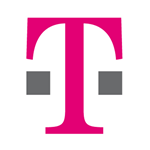Update: T-Mobile's official response to the National Advertising Division is as below.
NAD’s findings are a validation of our marketing approach. In fact, today's NAD findings won't result in any substantial changes to our marketing claims. We will continue to spread the word about our coast to coast 4G coverage, superfast 4G network, and superior call clarity, along with our message of simple, no annual service contract plans, unlimited data and the best upgrade program, JUMP!
-Mike Sievert, T-Mobile CM
T-Mobile has been a bit more brazen with its advertising since the start of its unconventional "Uncarrier" campaign, and plenty of people have started to notice. That includes at least a few people that T-Mobile would rather avoid, namely the National Advertising Division, a division of the Advertising Self-Regulatory Council overseen by the Council of Better Business Bureaus. The NAD took action after a complaint from AT&T.
Cnet reports that the NAD took exception to T-Mobile's claim that its wireless network offered "50% more bandwidth than AT&T." Apparently T-Mobile's comparison was only using the older HSPA network (which both companies have referred to as "4G" in advertising and marketing material) and ignored the newer LTE networks. T-Mobile's network is almost entirely HSPA with only a few LTE markets, whereas A&T has been expanding LTE for almost two years. The NAD called the HSPA-only comparison "flawed," and recommends that T-Mobile modify its advertising to include more specific information on locations and technology conditions that might allow its customers to use more bandwidth when accessing the data network.
Here's an example. Note that the commercial never makes a distinction between HSPA ("4G") and LTE, and instructs customers to visit at T-Mobile store for more details.
[EMBED_YT]https://youtu.be/h2Scc6fGz9o
[/EMBED_YT]
The NAD also recommends that T-Mobile stop claiming that it has the "most advanced technology" and "faster 4G service." Though this kind of marketing language isn't exactly uncommon in the American carrier market, it might be particularly difficult for T-Mobile to back up, considering that its HSPA and LTE network barely differs from AT&T in terms of actual hardware. The Division also wants T-Mobile to stop using coverage maps when claiming 4G or LTE superiority and stop broadly claiming superior call quality, instead favoring the more specific "audio or voice quality."
The National Advertising Division and the Advertising Self-Regulatory Council don't have any actual means of compelling T-Mobile or any company to comply with their recommendations; the ASRC (formerly NARC) is a coalition of advertisers and third-party overseers with no government backing. T-Mobile released a statement saying it would "take into consideration the concerns expressed with future advertising," while AT&T has not yet responded.
For further reading in carrier craziness, check out T-Mobile's suit against AT&T over two shades of pink. Yes, really.
Source: Cnet

